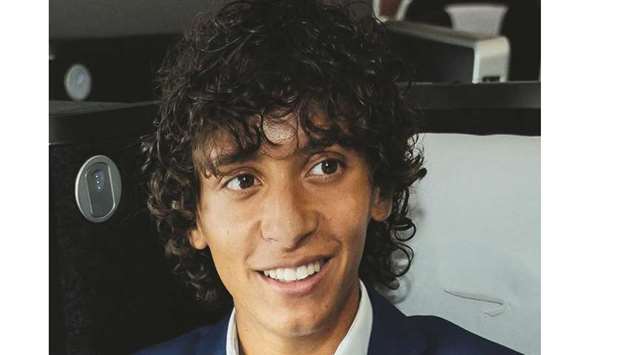There are many ways to describe how the return to service for most airlines will be. Slow, gradual, measured – perhaps even nervous as the world continues to grapple with the coronavirus pandemic, while lockdowns are slowly eased at several nations around the world. If there’s one thing airlines have realised during this stage of the pandemic, it’s that the only way to win at least some passengers back, is to restore travel confidence which is at an all-time low.
As the coronavirus spread globally, the message from airlines to potential passengers is that planes are generally safe and that extra precautions are actively being taken to uphold the industry’s renewed focus on hygiene. But the science behind cabin air quality has sometimes been lost in some of the communication to the public.
Airlines have noted that all, or most, of their planes use high-efficiency particulate air filters. Air flows past millions of particle-grabbing layers in the filters and is blended with air sucked in through the engines, creating roughly a 50-50 mix of fresh and recirculated air.
Delta said that “HEPA air filters extract more than 99.999% of even the tiniest viruses.” A European Union Aviation Safety Agency study outlines that cabin air “can be better than the air found in many office buildings,” given how frequently it recirculates. Southwest said the filters help provide onboard air quality “which, in most cases, exceeds the quality of air that can be found outdoors.”
“To be honest, airplanes are not designed to prevent infectious-disease transmission,” Qingyan Chen, a Purdue University engineering professor who helped lead a major FAA-funded research project on disease transmission aboard aircraft and was co-director of the FAA-funded Airliner Cabin Environment Research centre from 2004 to 2010. “They’re not designed to do the job” he told the Washington Post. Scientists agree that HEPA filters are highly effective at capturing everything from viruses to skin flakes, but the problem, explained by various scientists, is that passengers can still breathe in tiny floating droplets from another passenger seated nearby – before the air carrying those droplets can be vented out of the cabin and filtered.
Any person deciding whether to fly, now or in the future, should be vigilant, and wear a mask, Chen added.
As we approach June, it’s now mandatory for passengers to wear a mask on any airline in nations including Spain, Canada, Chile, Qatar, Kuwait, Oman, India, & Kenya. Other airlines, including Lufthansa, easyJet, Austrian, Finnair, Alitalia, Ryanair, Singapore Airlines, Air Tanzania have also implemented a mandatory mask wearing policy.
IATA now supports the wearing of face masks for passengers and crew while on board aircraft as a critical part of a layered approach to biosecurity to be implemented temporarily when people return to traveling by air. IATA has backtracked on its position of social distancing onboard, and unlike its previous statement which first supported social distancing in the cabin – it now does not support mandating social distancing measures that would leave ‘middle seats’ empty — a relief for the airlines who publicly slammed the idea over the prospect of lost revenue should the aircraft cabin be 1/3 empty.
Calls for social distancing measures on aircraft would fundamentally shift the economics of aviation by slashing the maximum load factor to 62%. That is well below the average industry breakeven load factor of 77%.
With fewer seats to sell, unit costs would rise sharply. Compared to 2019, air fares would need to go up dramatically – between 43% and 54% depending on the region – just to break even.
As part of the slower return to skies, passengers should expect the airlines to adopt either all, or some of the following measures.
Temperature screening of passengers and crew. Boarding and deplaning processes that reduce contact with other passengers or crew. Limiting movement within the cabin during flight, more frequent and deeper cabin cleaning; and simplified catering procedures that lower crew movement and interaction with passengers.
Here in Doha, Qatar Airways is just one of the airlines to implement such measures onboard its flights, Business Class meals will be served on a tray instead of a table set up, and a cutlery wrap will be offered to passengers as an alternative to individual cutlery service, in an effort to reduce contact between the crew and the passengers. While in Economy Class, all meals and cutlery are served sealed as usual. Additionally, large bottles of hand sanitiser will be placed in the galleys and made available for both cabin crew and passengers. All social areas onboard the aircraft have also been closed to observe social distancing measures.
“We need a vaccine, an immunity passport or an effective Covid-19 test that can be administered at scale. Work on all of these is promising. But none will be realised before we will need to re-start the industry. That’s why we must be ready with a series of proven measures, the combination of which will reduce the already low risk of inflight transmission. And we must be careful not to hard-wire any solution so we can be quick in adopting more efficient measures as they will undoubtedly become available,” said Alexandre de Juniac, the CEO of IATA.
Some airlines might consider changing the materials used inside the aircraft, explained Grant West, a vice president for Collins Aerospace Interiors products and aftermarket services, told media. Currently, his team is looking into materials that could suppress pathogens, including some coverings that would be single-use, that could coat high-touch areas like seats, belts, meal trays, and armrests.
*The author is an aviation analyst.



